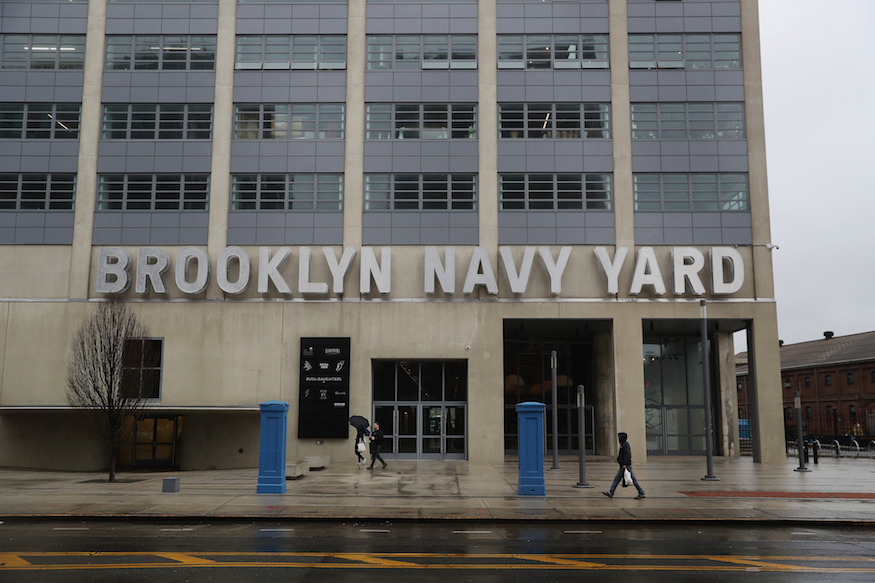The Brooklyn Navy Yard is making itself known as a manufacturing hub here to help New Yorkers find employment, and it seems to be working.
The Brooklyn Navy Yard Development Corporation’s employment center connected 459 people to jobs in fiscal year 2018 — the most single-year hires since the center opened 19 years ago.
That job stat comes from a report released Wednesday by the Brooklyn Navy Yard Development Corporation. Those 459 new hires will earn a total of $12 million annually, according to the report.
The Yard is home to a variety of manufacturing spaces, with companies that make everything from countertops to whiskey to apparel. In Nov. 2017, Mayor Bill de Blasio announced the opening of Building 77 there, a 16-story, one-million-square-foot manufacturing hub set to create more than 6,000 jobs.
Fiscal year 2018’s job growth puts the corporation on track to reach its goal of providing 17,000 jobs by 2020, according to the company.
Brooklyn Navy Yard job breakdown

Employees use sewing machines at the Justin Paul Inc. manufacturing facility inside the Brooklyn Navy Yard. Getty Images
The yard helps provide accessible middle-class jobs in New York City, according to the mayor, and the Brooklyn Navy Yard Development Corporation report took a look into who made up the year’s 459 hires in the report.
Per the report, 84 percent of the new hires are Brooklyn residents, with 33 percent of all the hires coming from the Yard’s closest five surrounding zip codes.
Thirty-four percent of the hires live in NYCHA buildings, and 46 percent have only a high school diploma or GED (13 percent do not). Fourteen perfect of the hires have experience in the criminal justice system.
Since the Brooklyn Navy Yard is a manufacturing hub, that field accounts for most of the hires: 55 percent are in manufacturing. Construction followed with 13 percent of the jobs, and administrative/office work and food and customer service each accounted for 7 percent. Transportation, security, health and human services and other labor rounded out the new hires in smaller amounts.



















